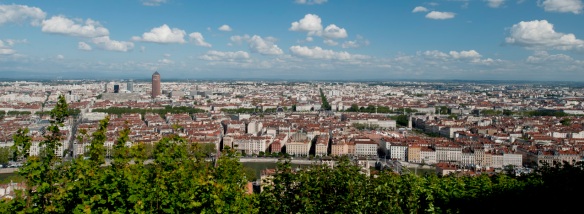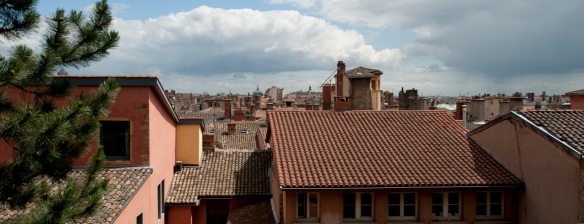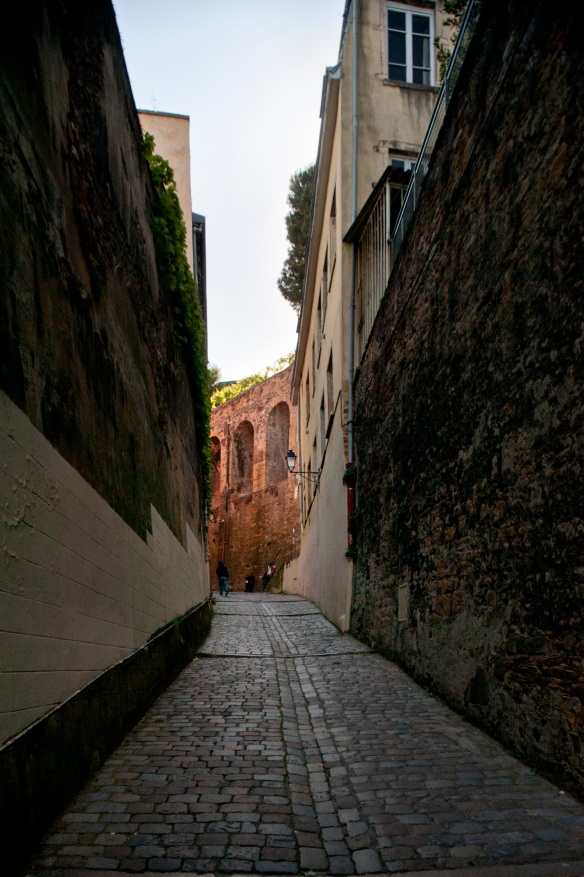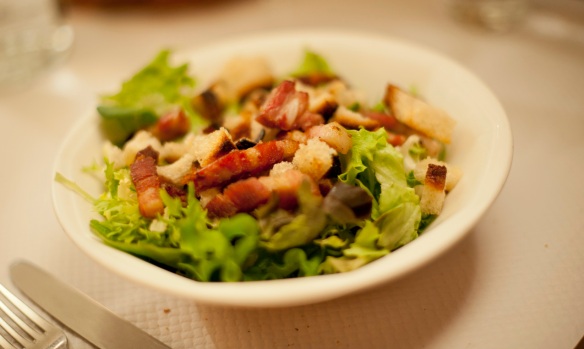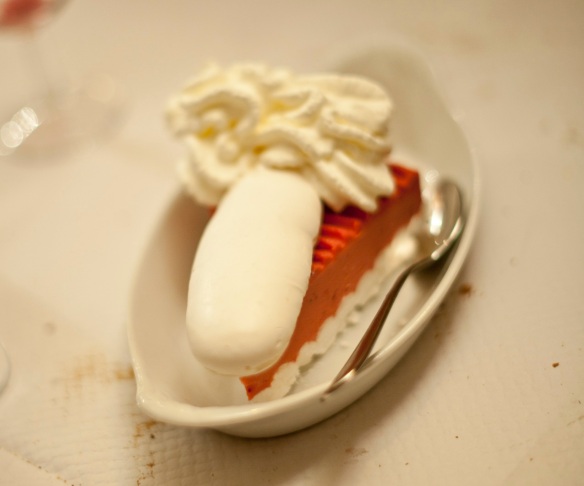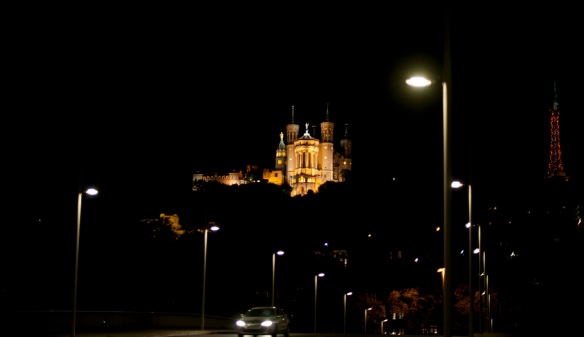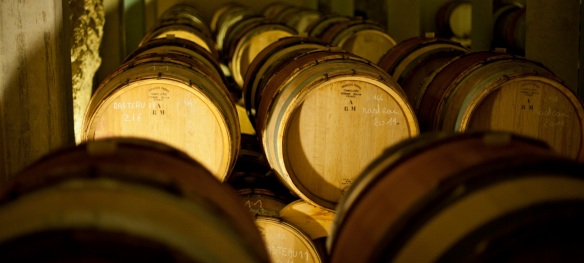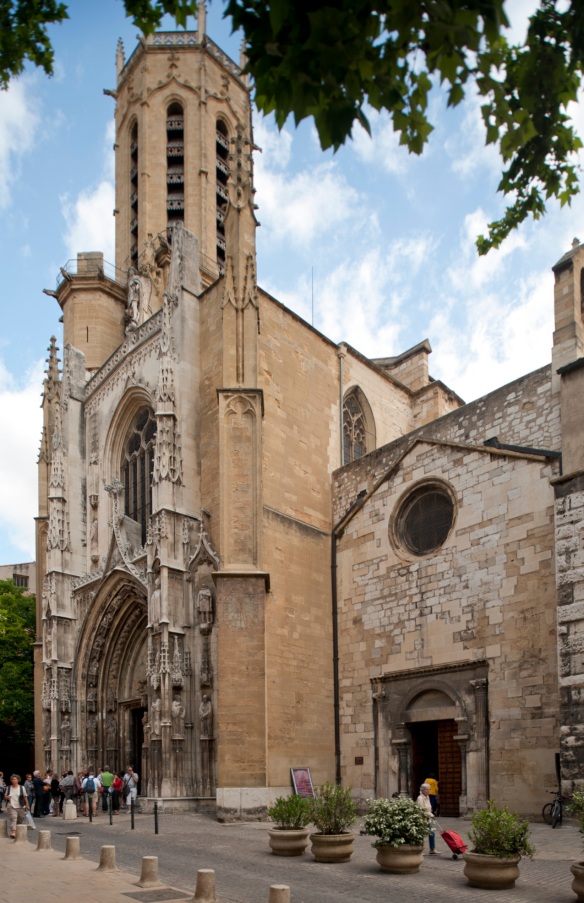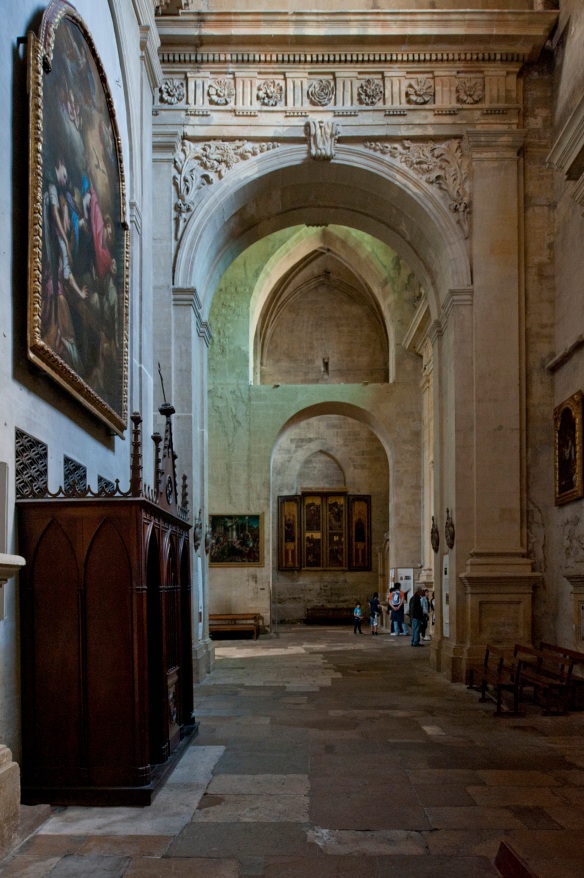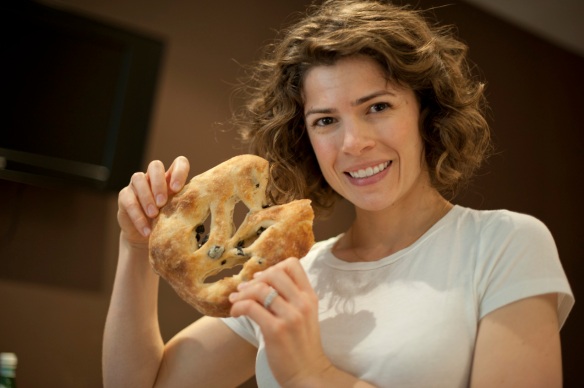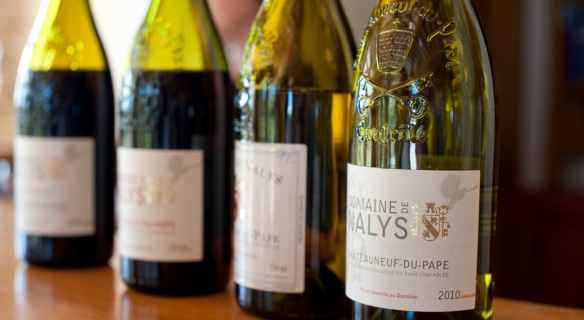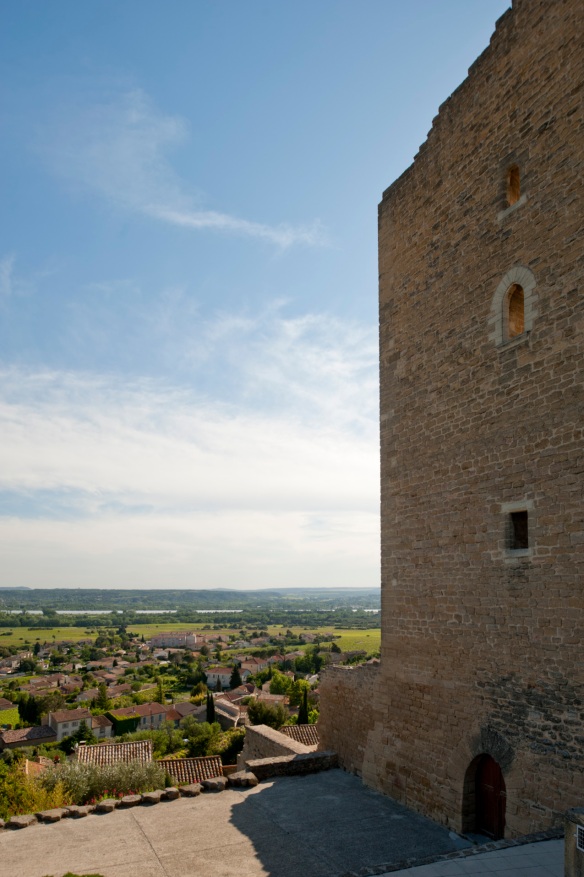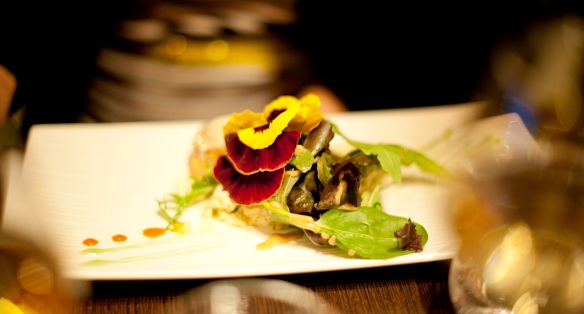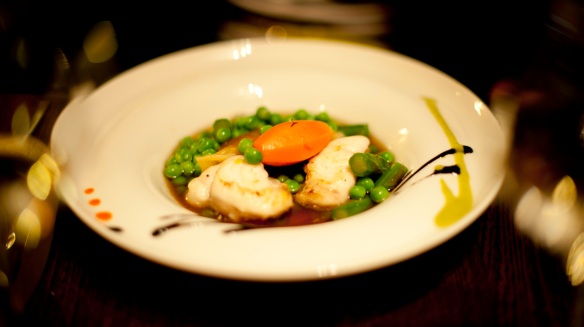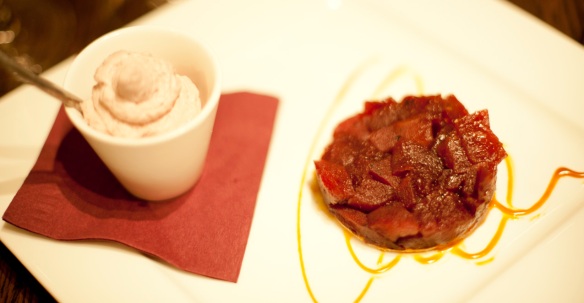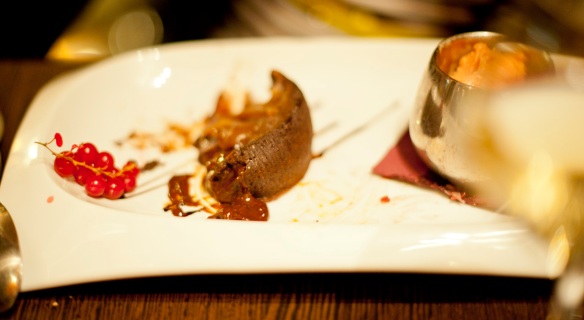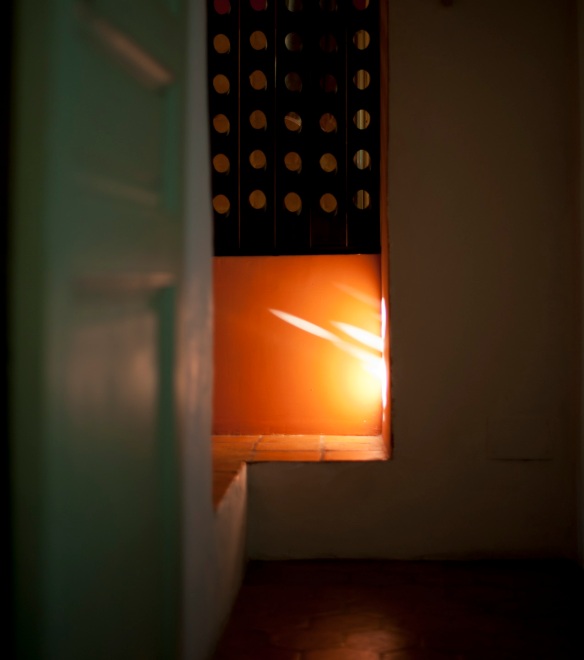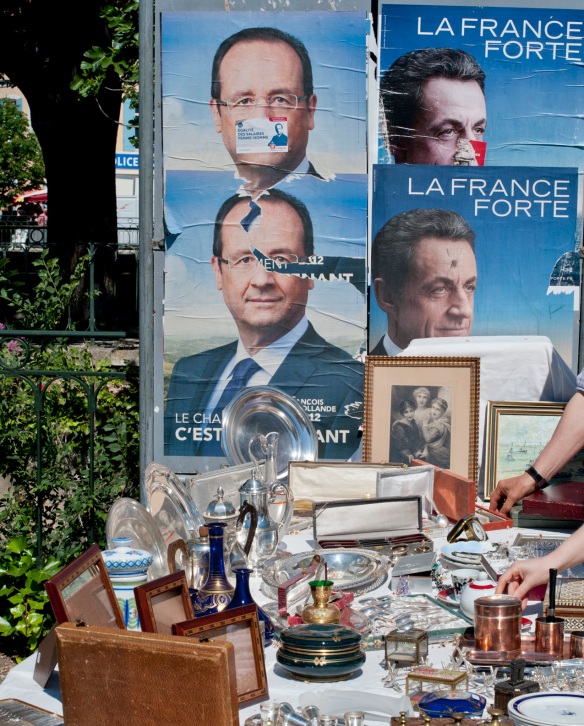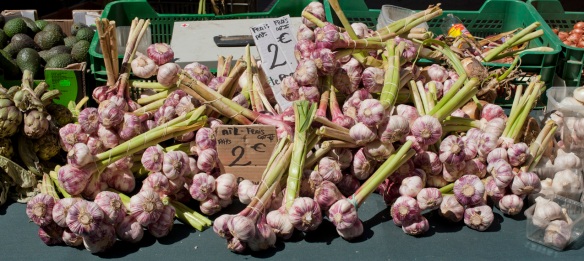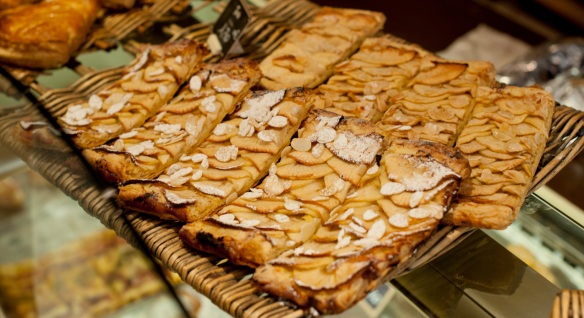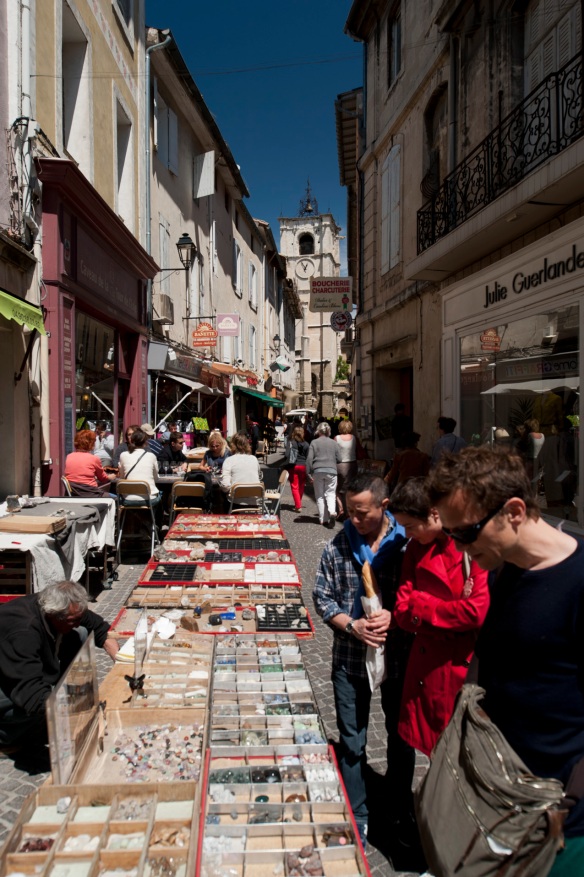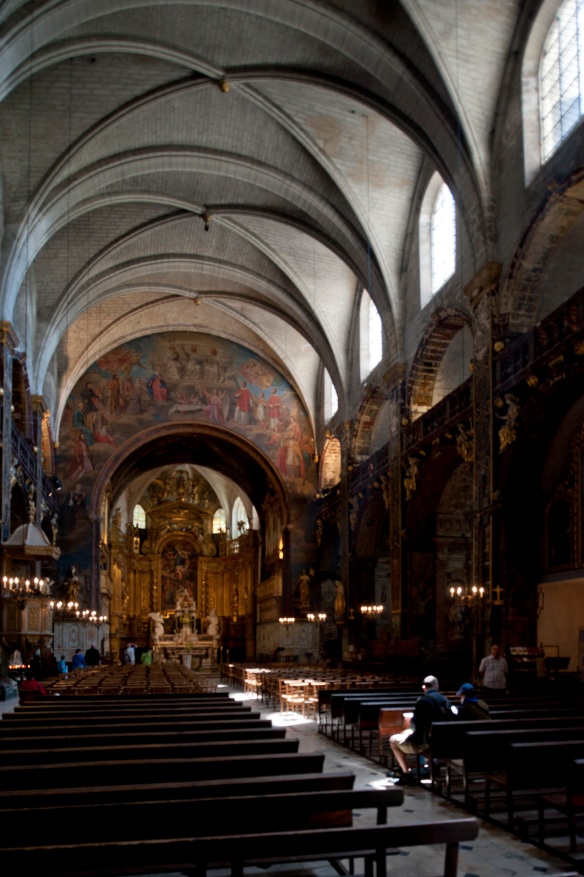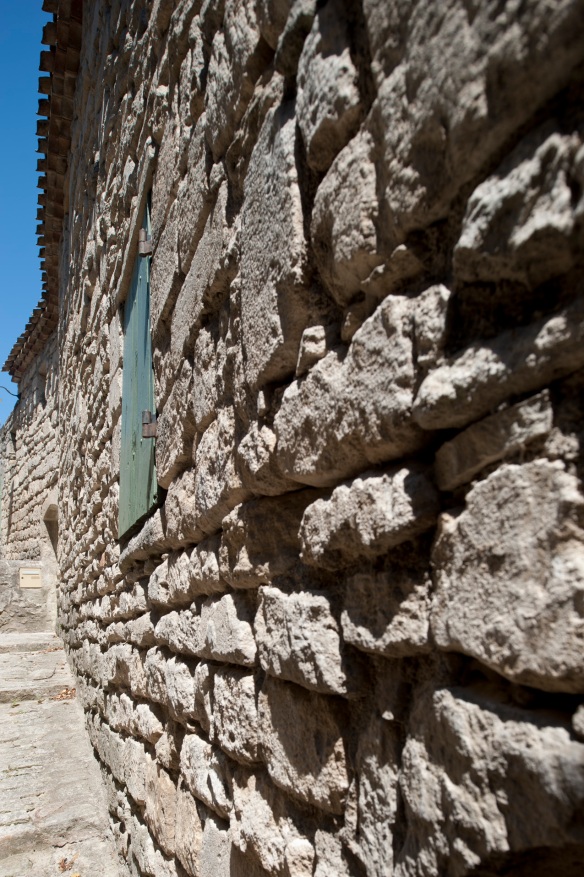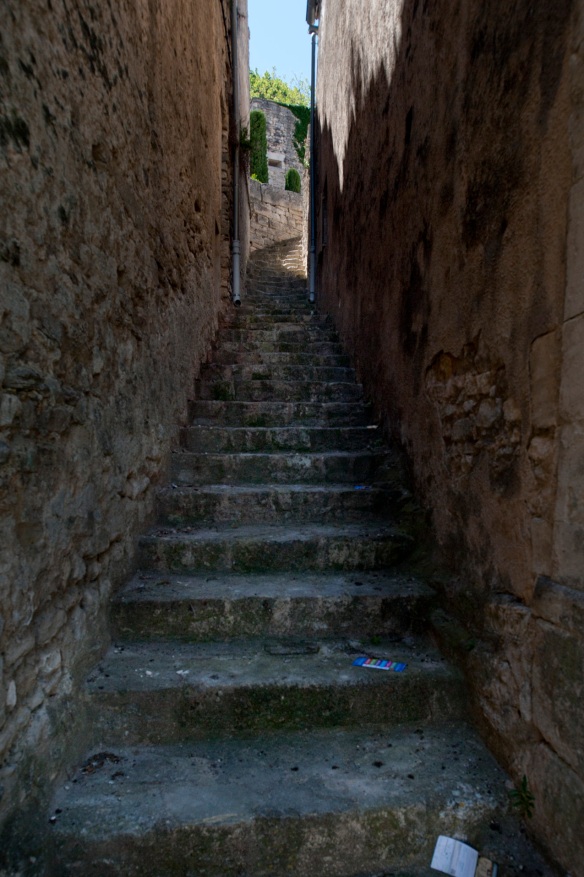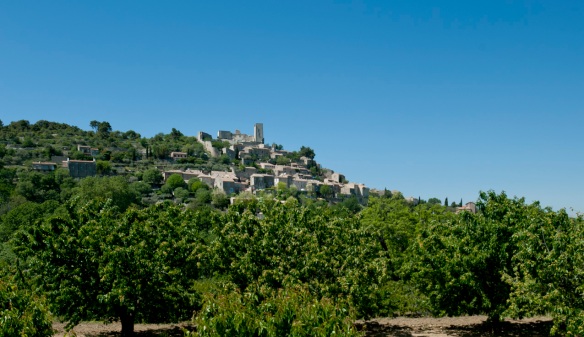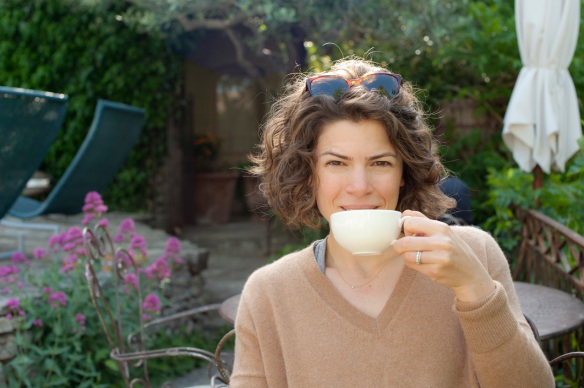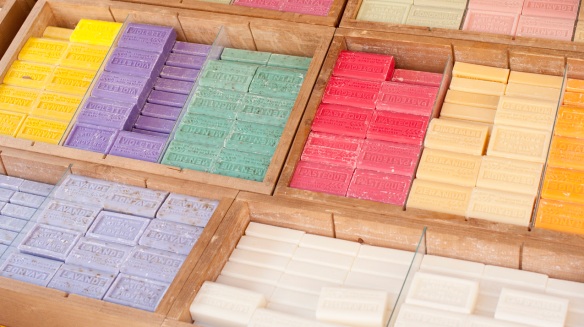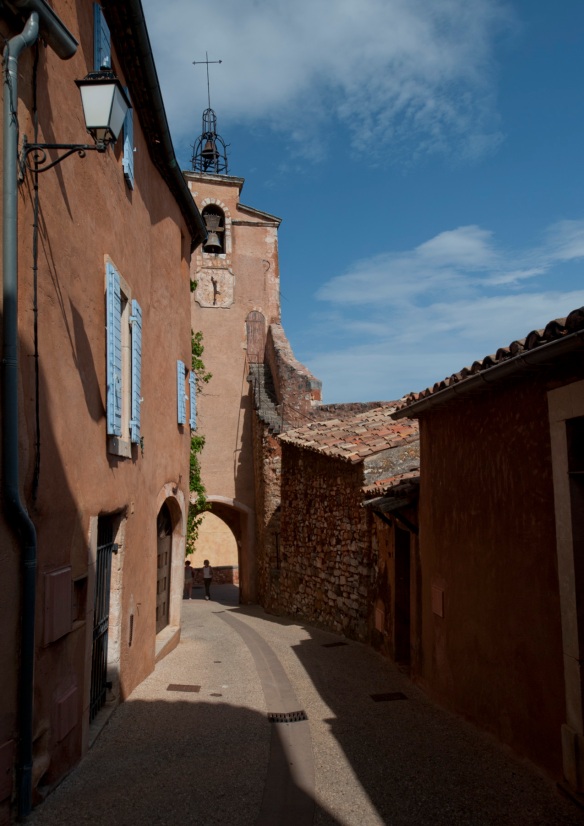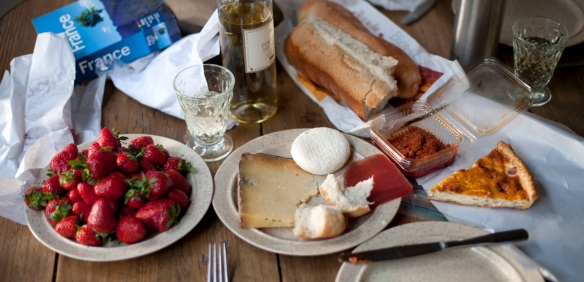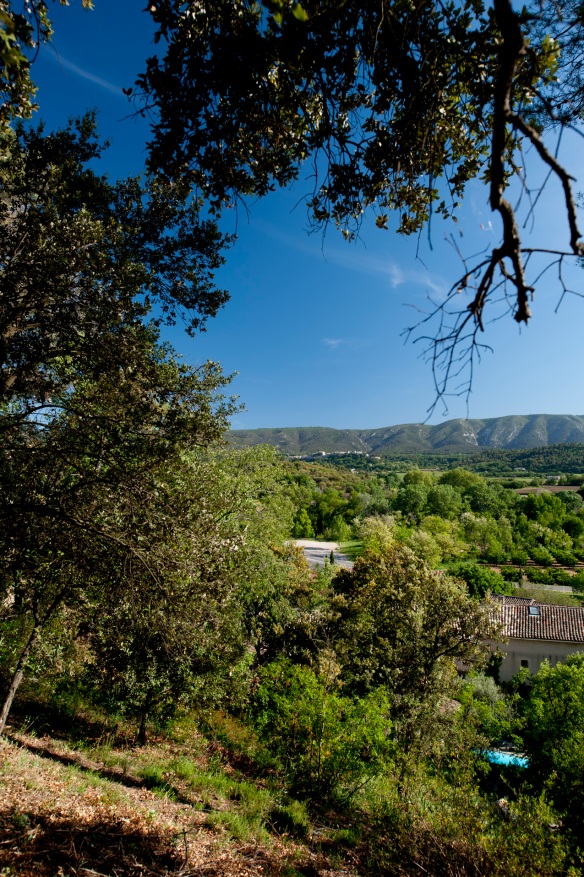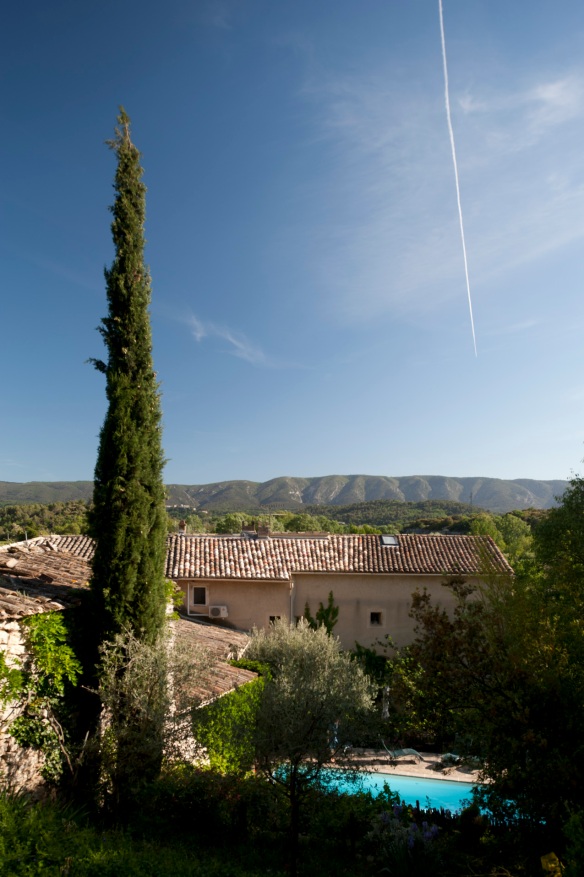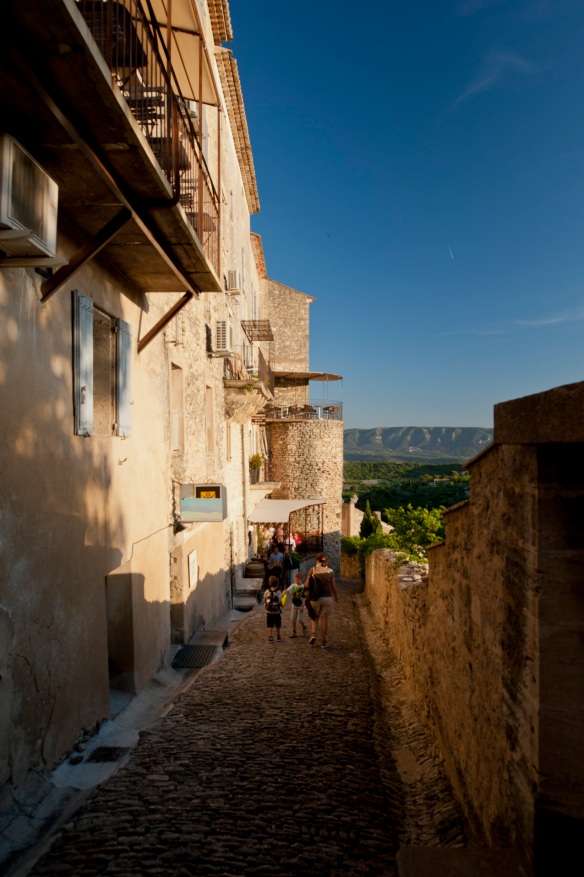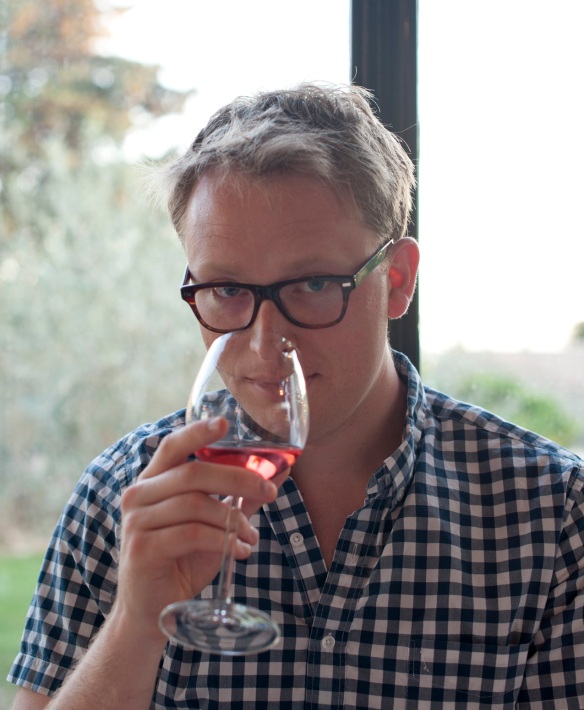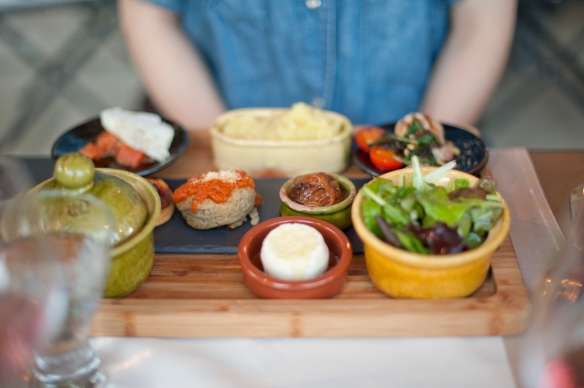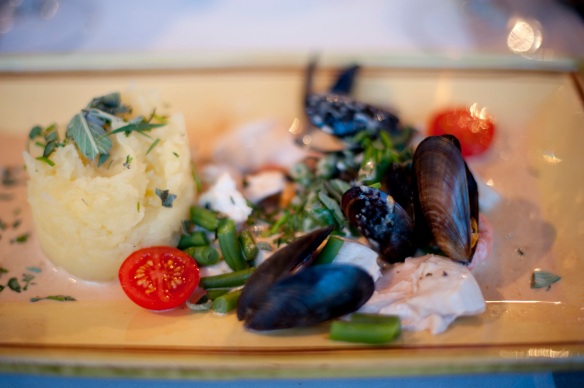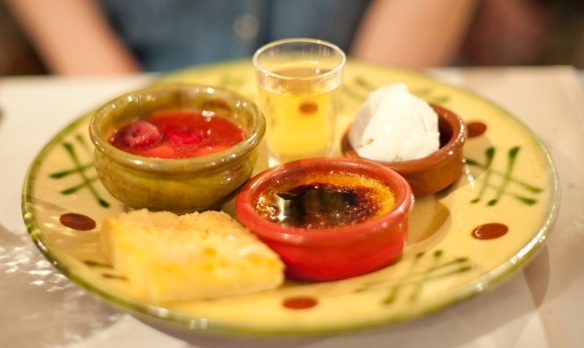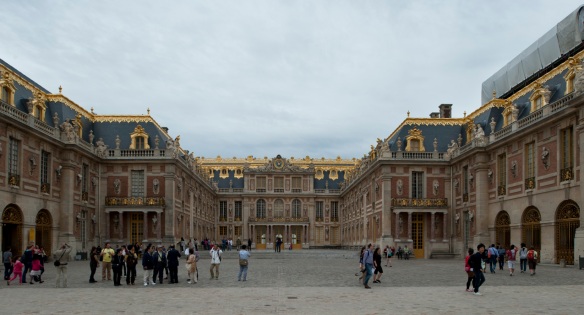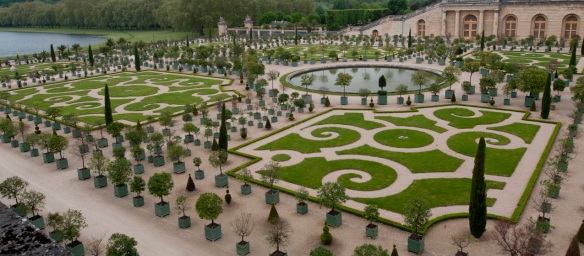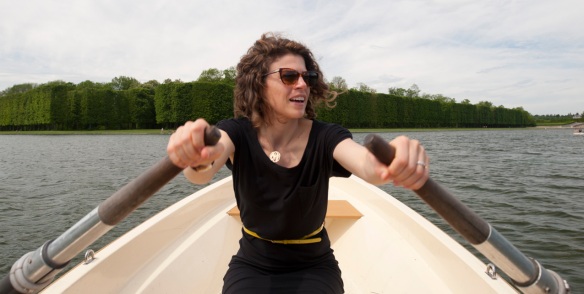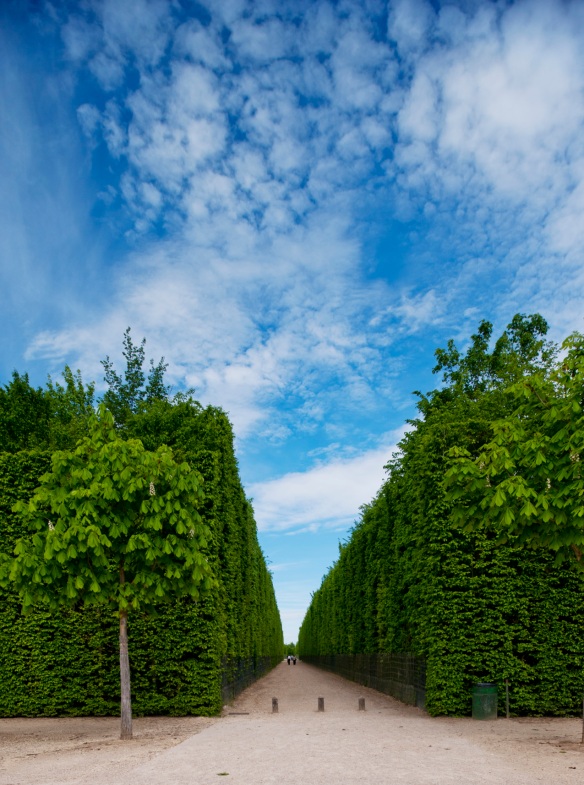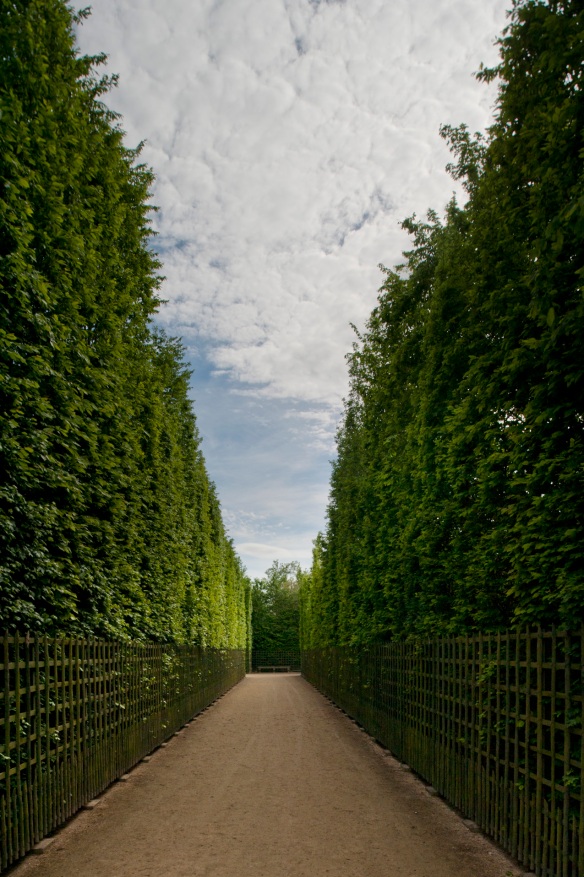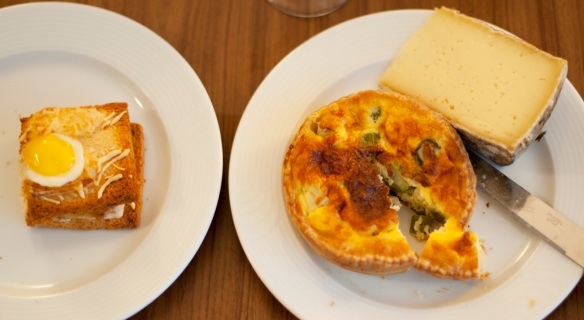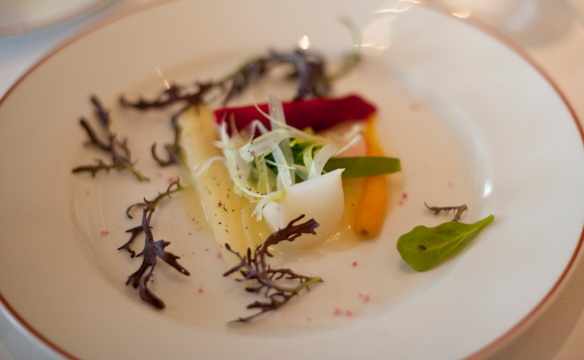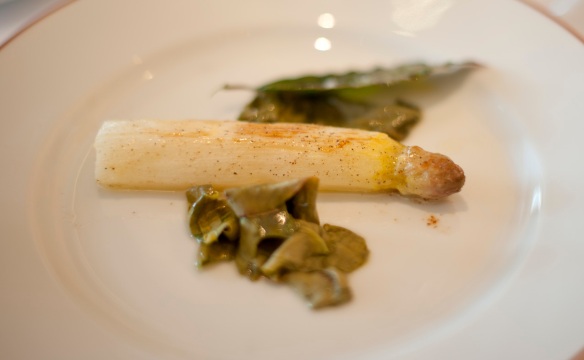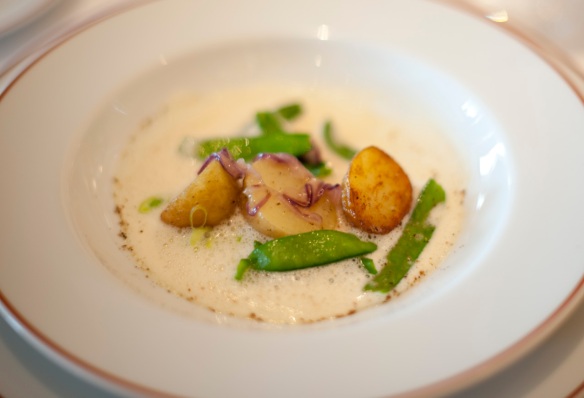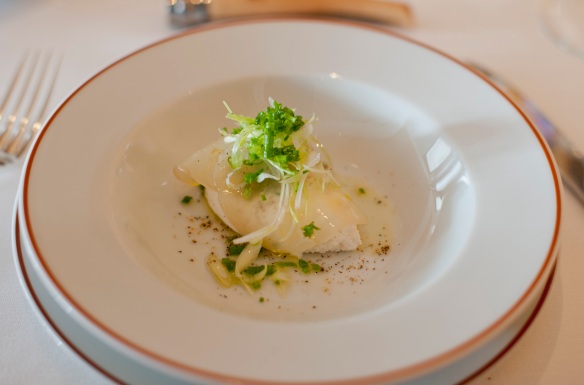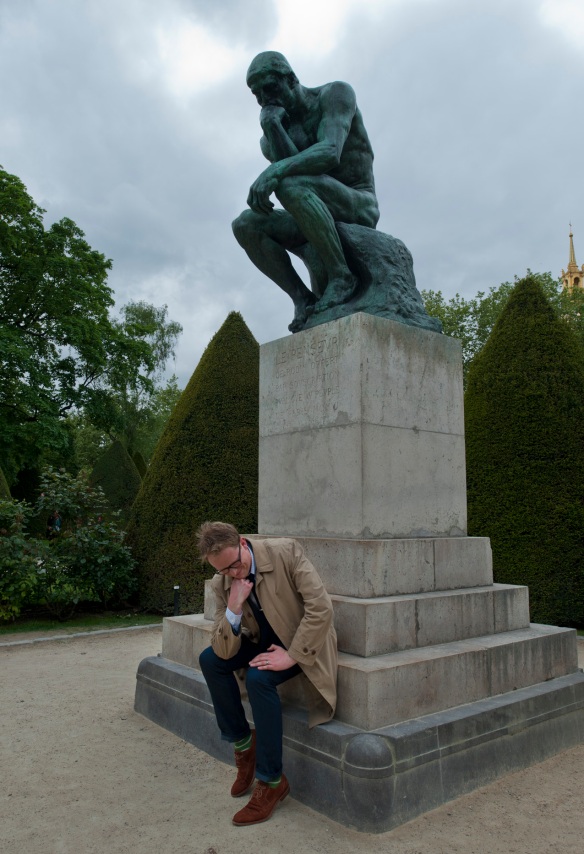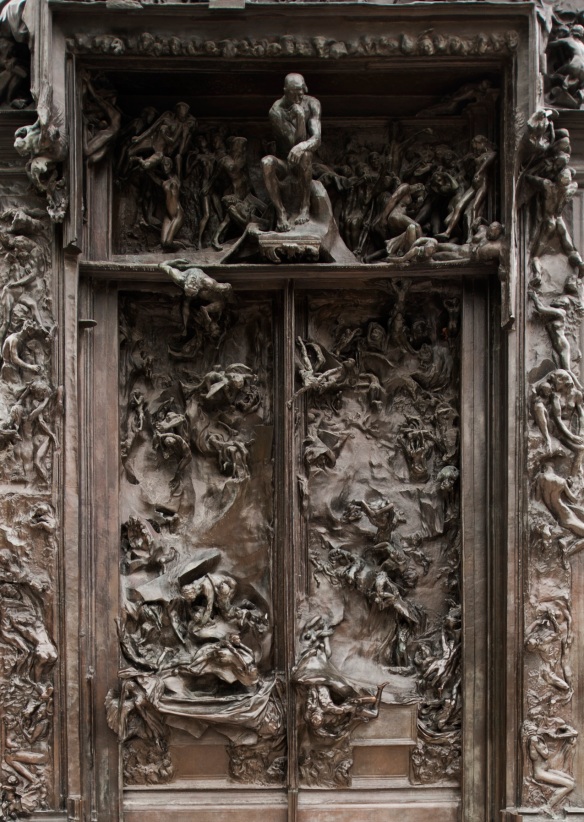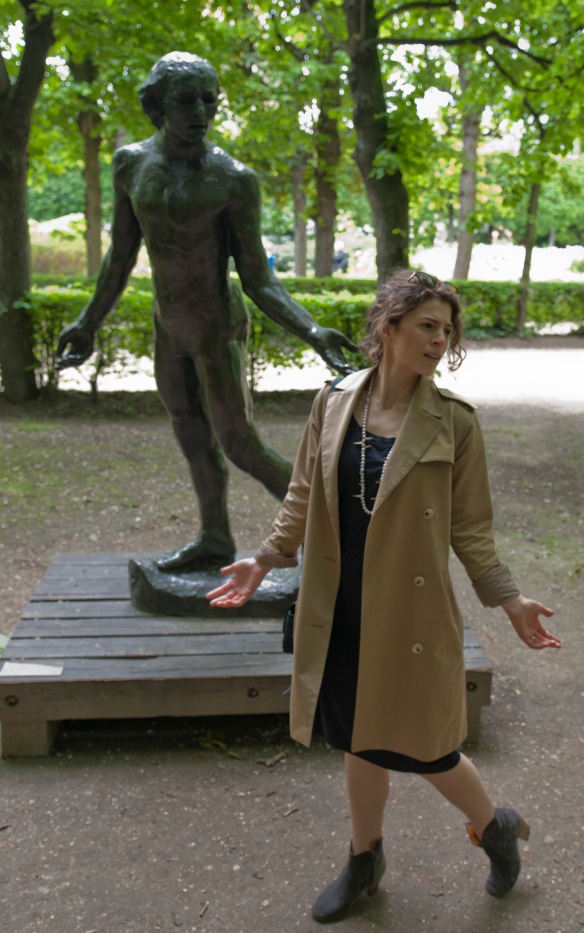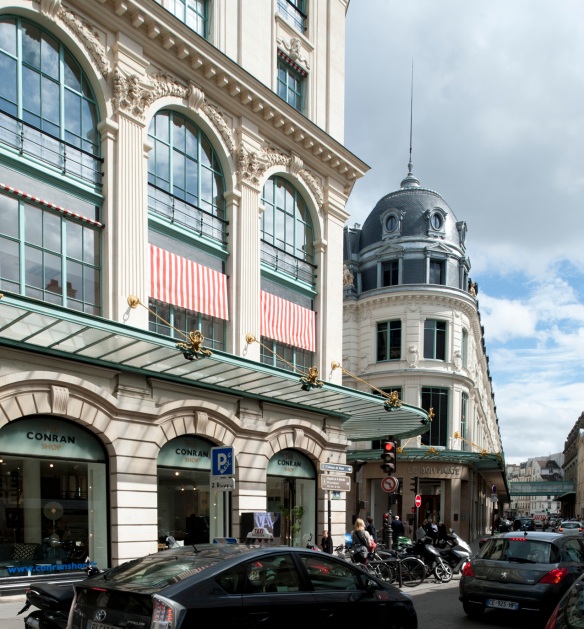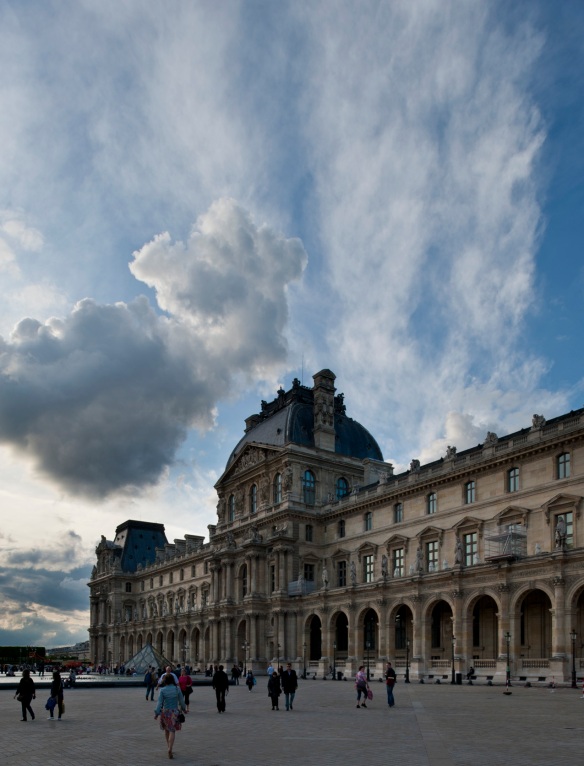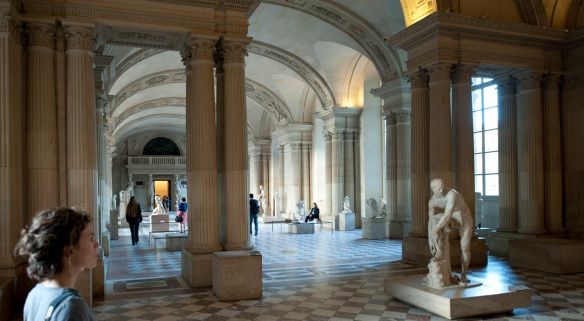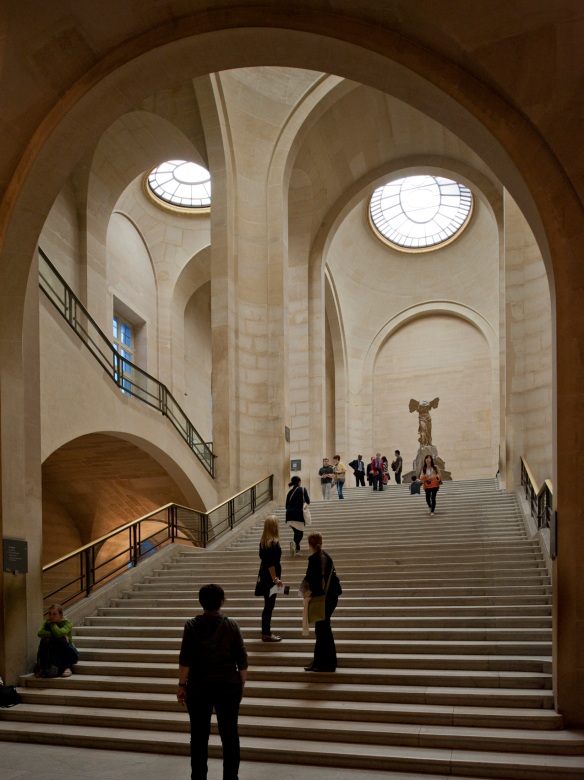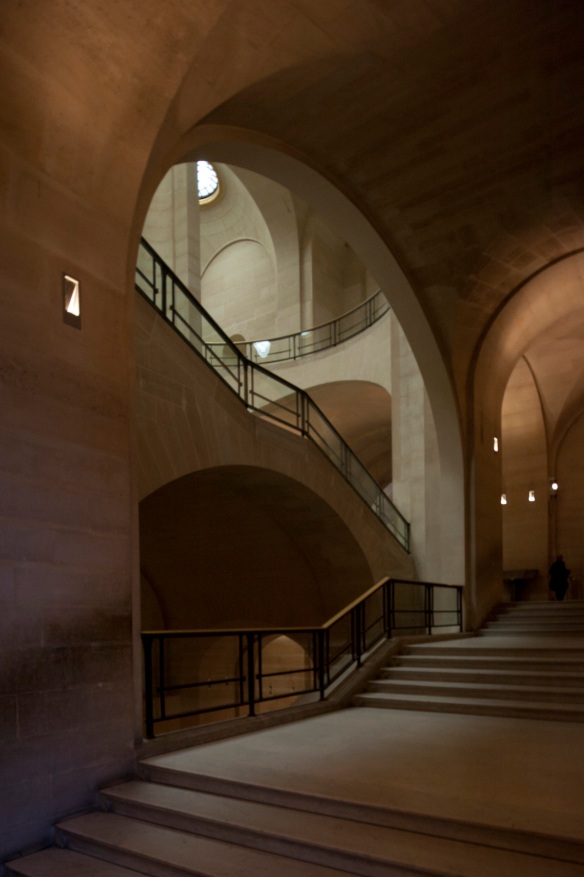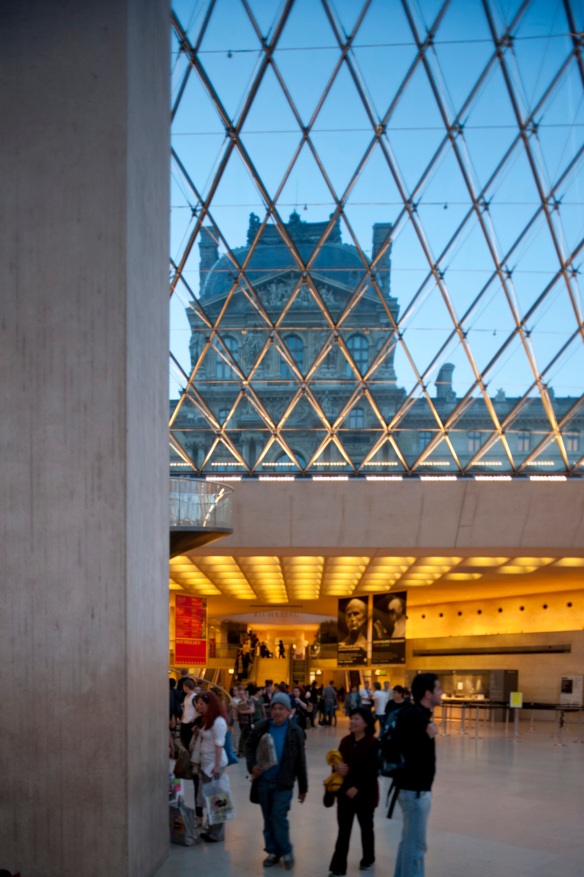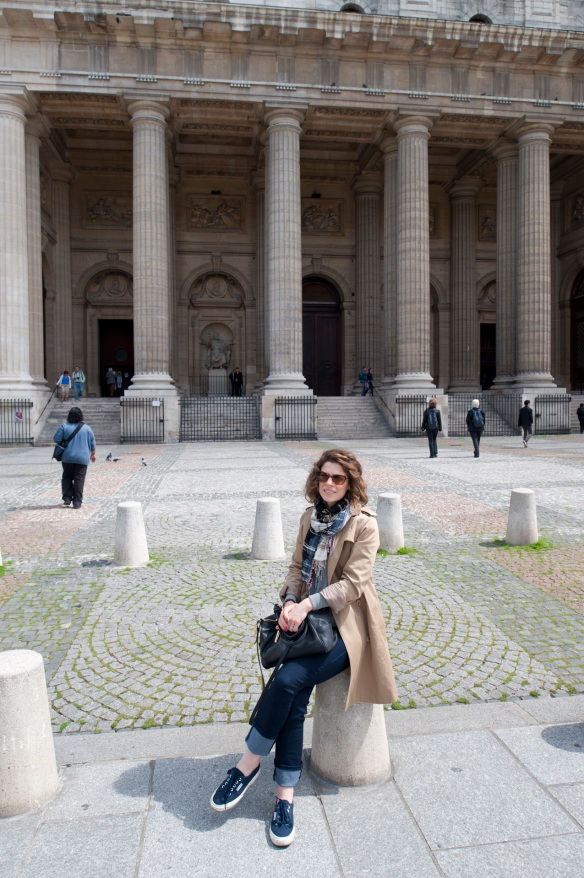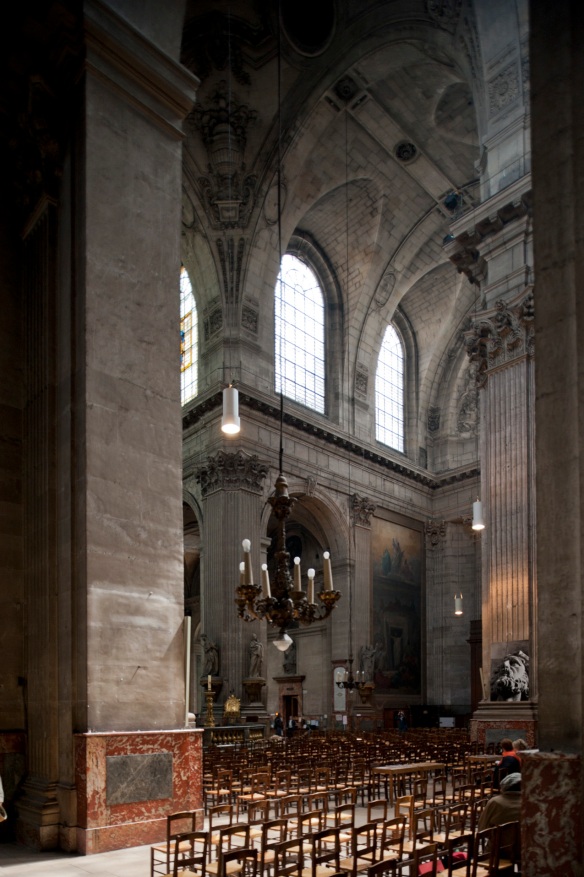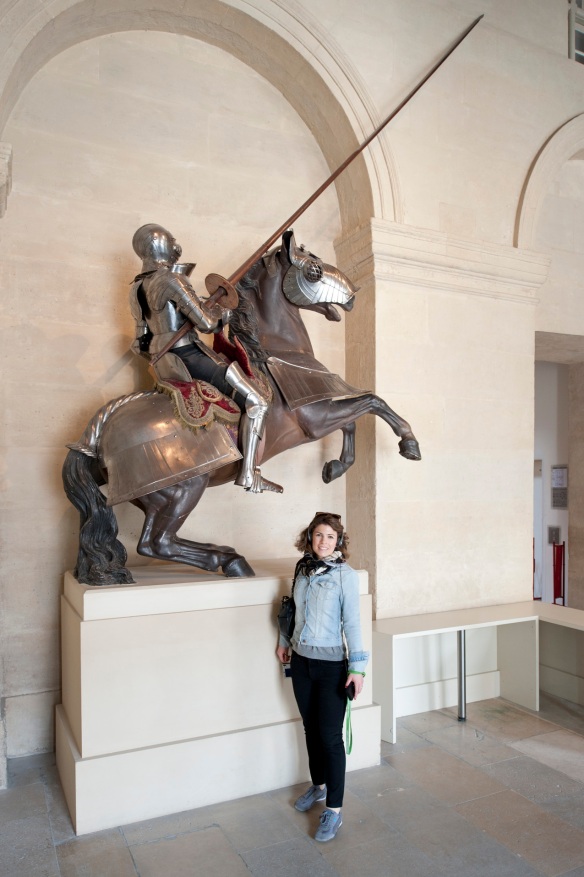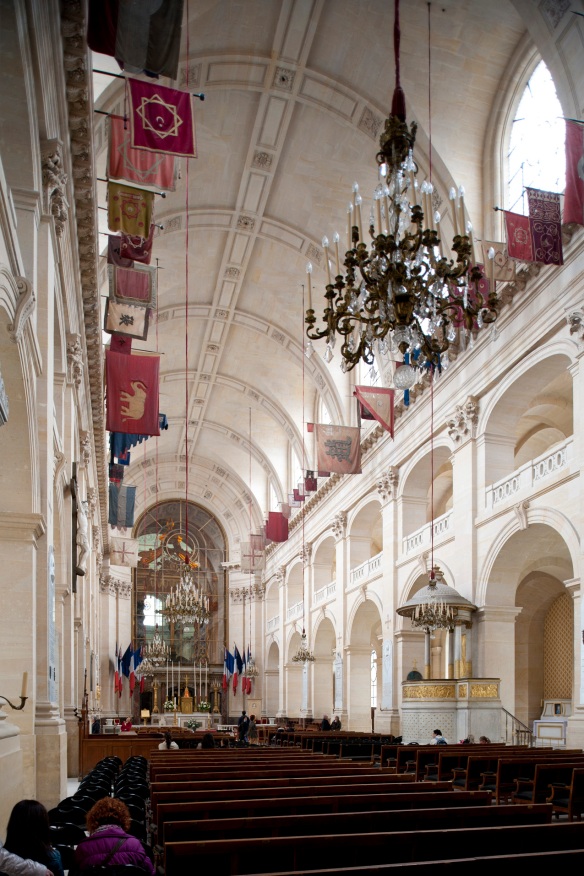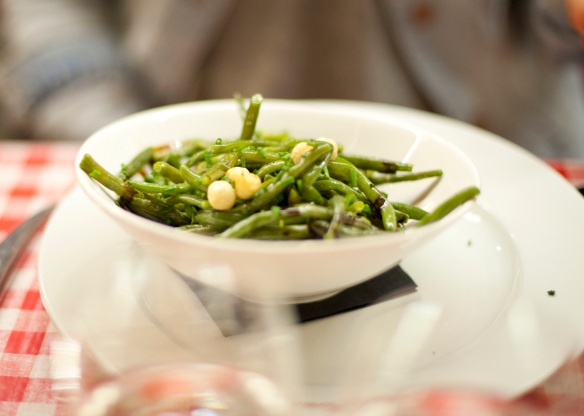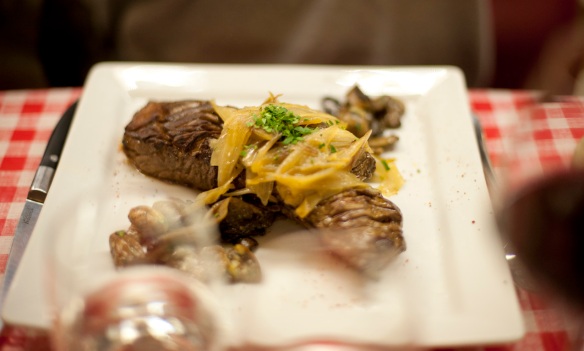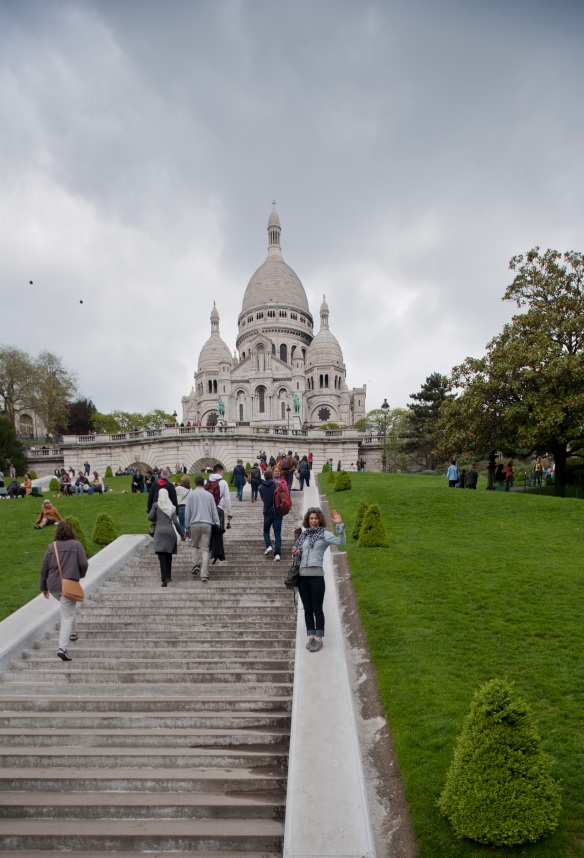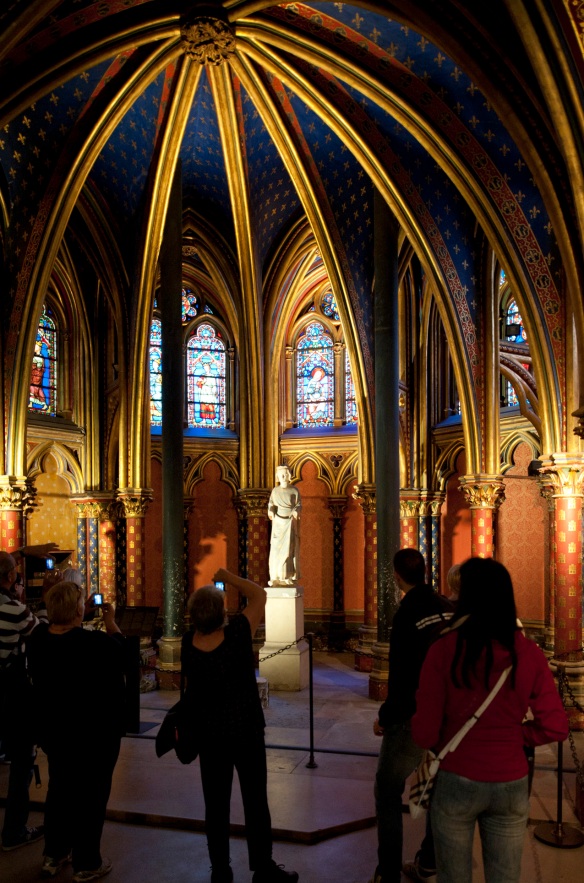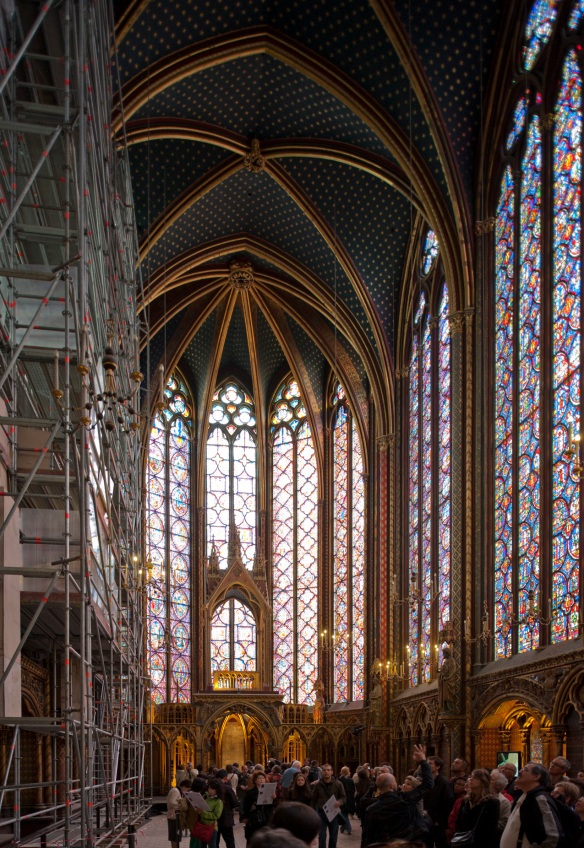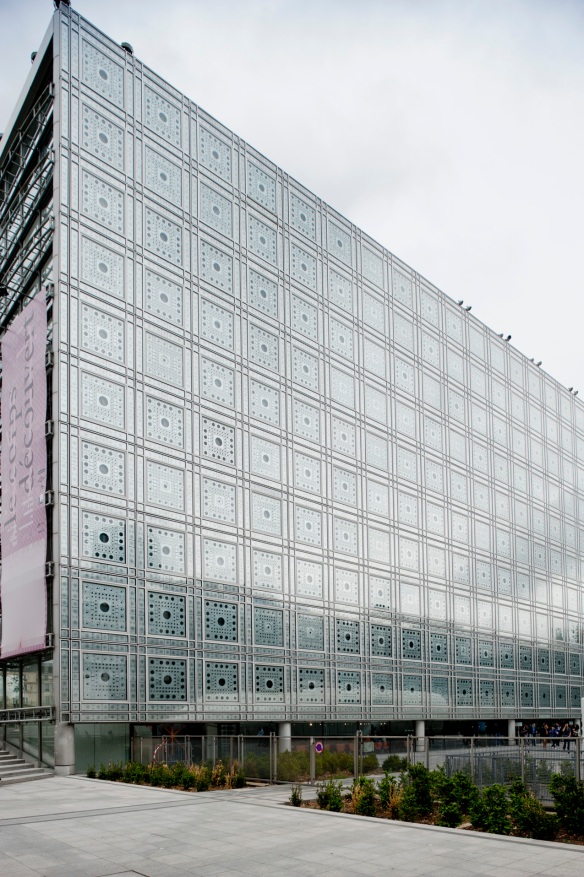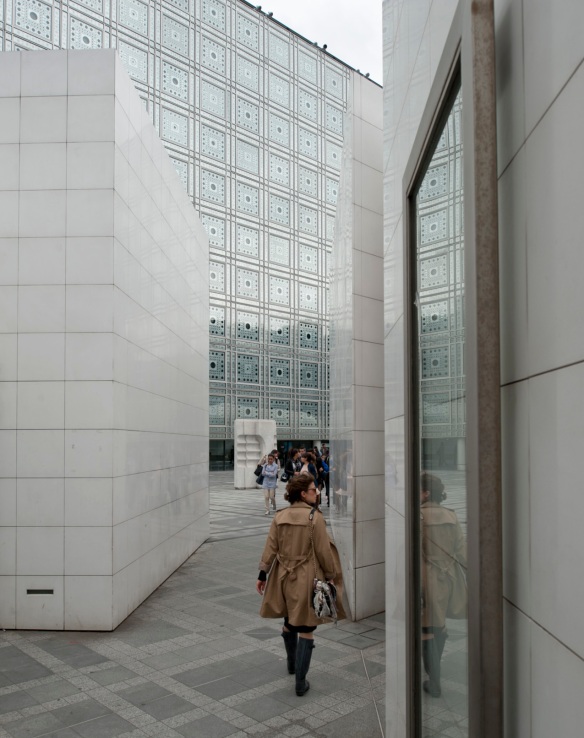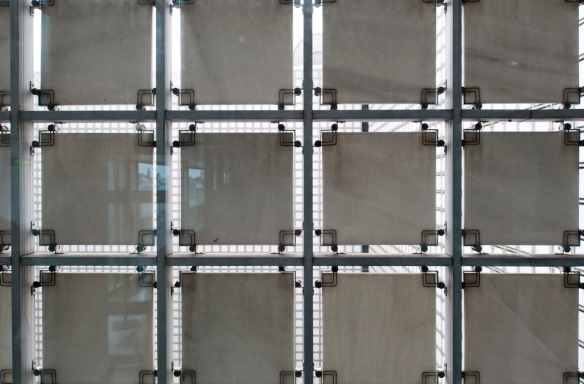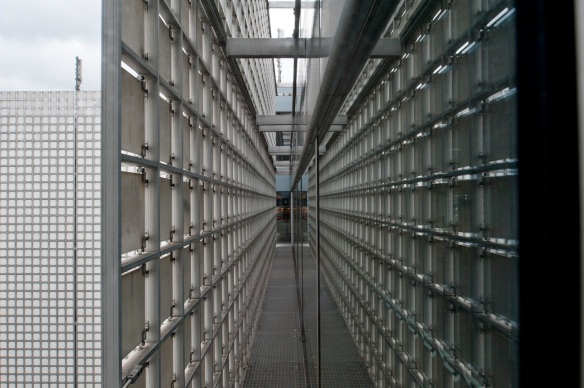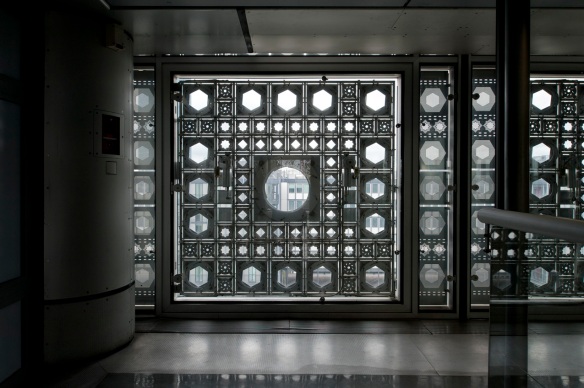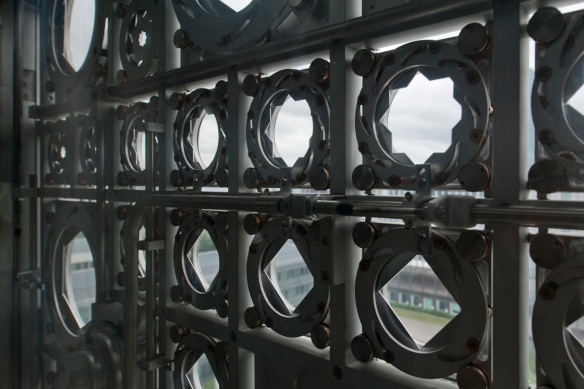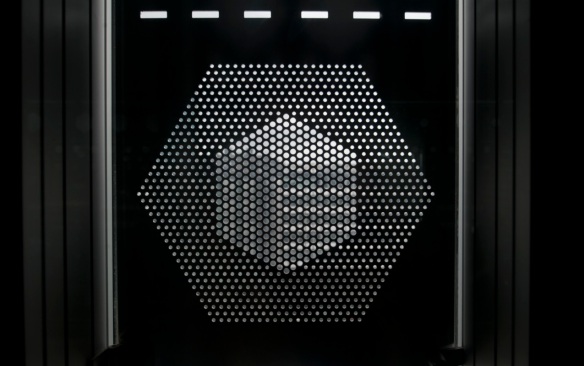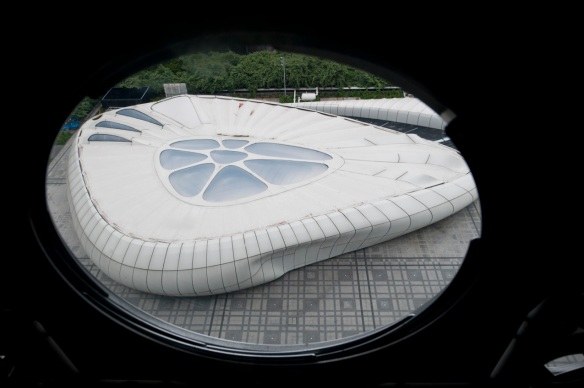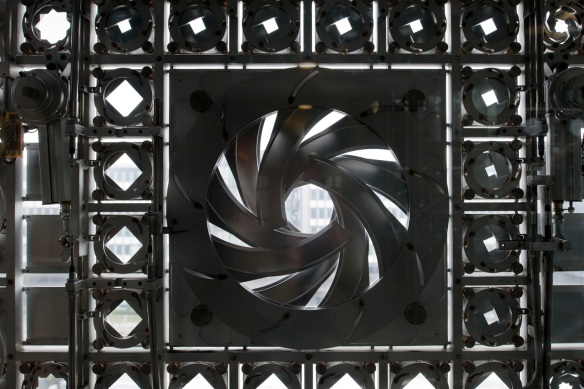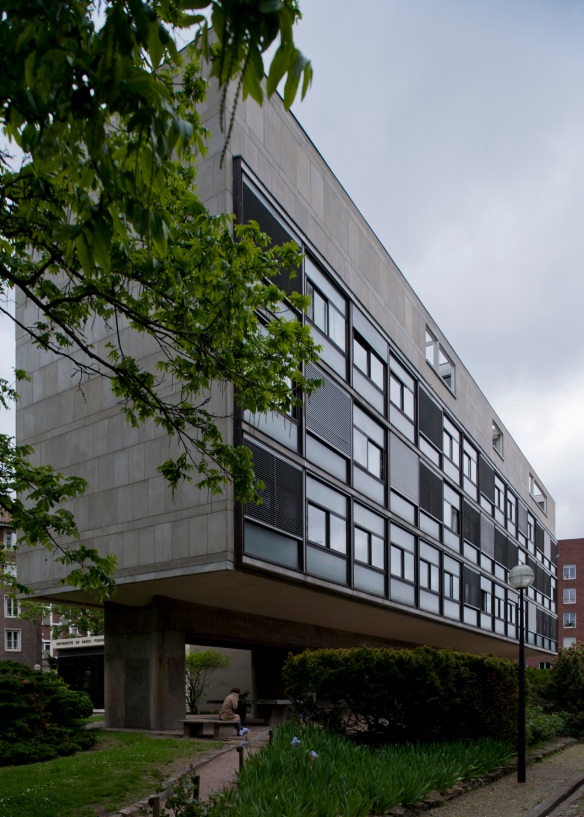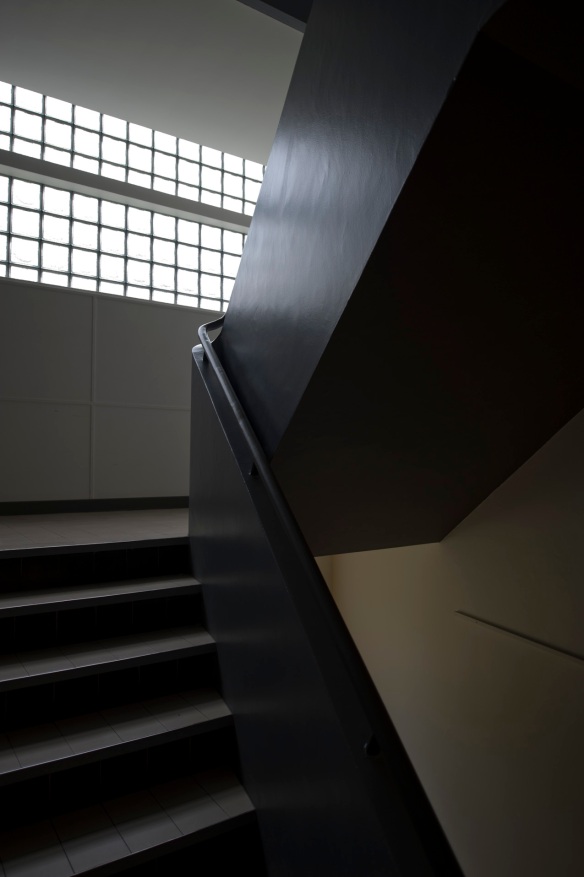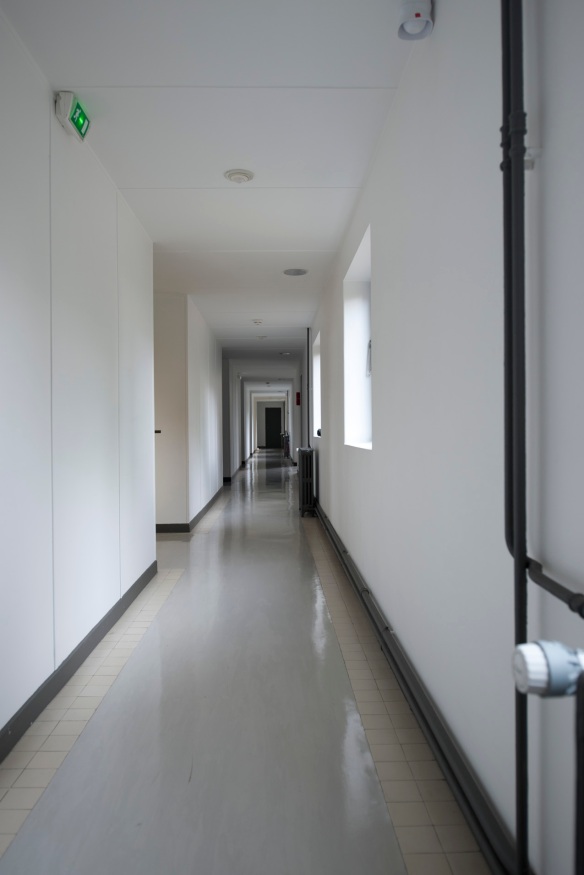After a great few days in Aix, we were headed back to Paris, but first stopped in Lyon for a day. As it turned out, we wished that we could have stayed longer because we were pleasantly surprised about what a fantastic time we had there. Lyon is located where the Soane river dumps into the Rhone, and the city is laid out on the river banks. In the photo above, the old city is in the foreground (behind the trees), and the Soane is the river just beyond it. The second oldest part of the city is located between the Soane and the Rhone (the green strip in the distance, parallel to the Soane). The city is known as the gastronomic capital of France, and we were looking forward to trying some of its traditional fare in a Bouchon (a small, friendly restaurant that serves regional food). Here are the photos:

Unfortunately, we only had the afternoon for exploring, but we made the most of it in Vielle Lyon, the oldest part of town.

Lyon is full of narrow passageways, called traboules, that link parallel streets, and frequently open onto interior courtyards.
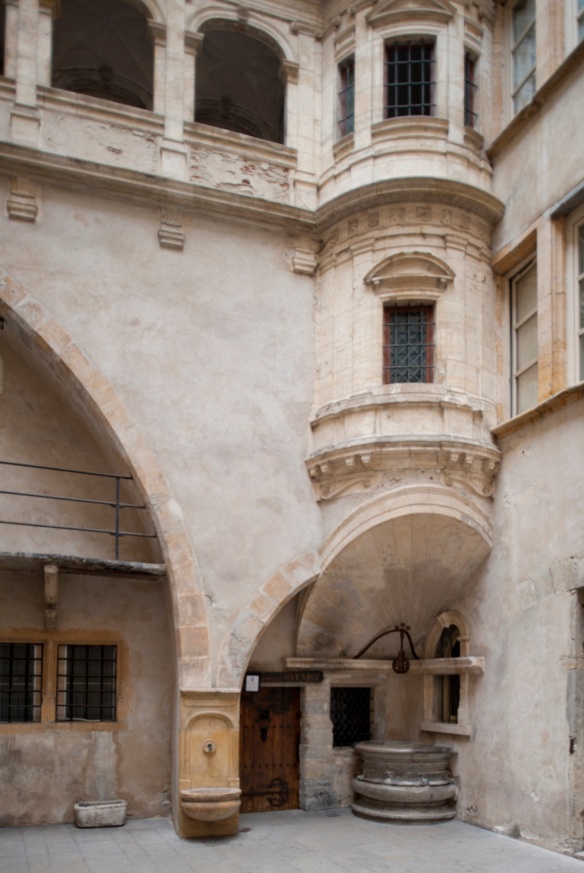
In this case, the passage opened onto a sort of cul-de-sac, which was pretty remarkable for its swooping forms and asymmetry. The future designer of castles in the Loire Valley, was faced with a couple of constraints. He could not touch down on the existing well in the corner.

In the other corner, he had to avoid the existing entrance seen here. Unfortunately, these small courtyards don’t really photograph all that well.

The traboules open up onto unexpected courtyards. Frequently, these tiny courtyards feature elaborate detail.

Most of the streets in old Lyon run parallel to the water, and the traboules made short cuts from the hill to the river.

During the German occupation in Word War II, the secret network of traboules proved to be very useful to the French Resistance.

We came at just the right time to catch the light from the stained glass windows dancing on the walls.

I don’t remember ever seeing the light quite so magically cast in a cathedral like this. Maybe I usually see them on cloudy days. The result was more of a psychedelic light show than I expected.

There’s nothing quite like the shifting scales and contrast in light that are created in the side aisles of Gothic churches.

Across the plaza in front of the cathedral, we spotted the city’s other huge church, the Basilica of Fourviere, which was our next destination. We took a funicular up to the top of the hill. Unfortunately, the interior of the church was undergoing renovations, and a mass was getting started, so we didn’t really have a chance to take a good look at it, but we did get the best view of the city from the hill (the photo at the top of this post).

The other great attractions at the top of the Fourviere hill are the remains of the original Roman settlement of Lugdunum. The two theaters are still in great shape, and are still used for plays and concerts. Workers were busy preparing for them when we walked through. Bernard Zehrfuss designed the concrete museum that pokes its way out of the hill in the distance. Unfortunately, we didn’t have a chance to go inside.

Although we covered a good portion of Old Lyon in just a couple of hours, we wished that we could have spent more time exploring its narrow streets.

We had heard great things about the bouchon that we picked for dinner, le Garet, and we were excited for a traditional Lyonnaise meal. Elizabeth looks a little worried about the food coming her way, though.

Elizabeth ordered sausage for her first course, and this is not exactly what she was expecting. It was tasty, though, and the bread that was put on the table was delicious, too.

I ordered a lentil dish with assorted meat parts for my first course. I was a little taken aback when the waiter brought over this giant tray of food with a pot of lentils in the middle. I assumed that I was to take the items family-style, so I took a big spoonful of each. I was told that the meat parts included nose, foot, ear, and stomach (I think. I can’t actually remember exactly what each one was.). Surprisingly (or maybe not, since Lyonnaise bouchon food is legendary for a reason), everything was delicious. Once I got past the names of the parts, I enjoyed everything there. They were flavored very delicately with citrus and spices. I took way to much for my first course, though.

Next, we had white asparagus with a flavorful red wine and mustard mousse, which is something we’d like to attempt at home.

I opted for the anouillette, a very rustic sausage with barely chopped up meat parts that I won’t mention. I was a little worried about this dish, but again, was very pleasantly surprised.

I ended up making a sizable dent in the course, considering how much I had eaten of the first course. Once I got over the barely chopped up parts, I realized that the flavors were complex and perfect, and the meat was tender. I would definitely order this again.

I hate to use superlatives, but this was probably the best cheese that I’ve ever had in my life. As he dropped of this huge wheel for us to take what we wanted, proprietor said that he had to drive fifty kilometers to get it from a small village in the country get it, and that it could not be found anywhere else. Unfortunately, since we had stuffed ourselves with the previous courses, we could only eat a sliver of it. If I ever go back, I will definitely be getting this again.

After completely stuffing myself on previous courses, I went with sorbet for dessert. when the waiter brought it out, he drizzled brandy all over it, and left the bottle for a digestif.

